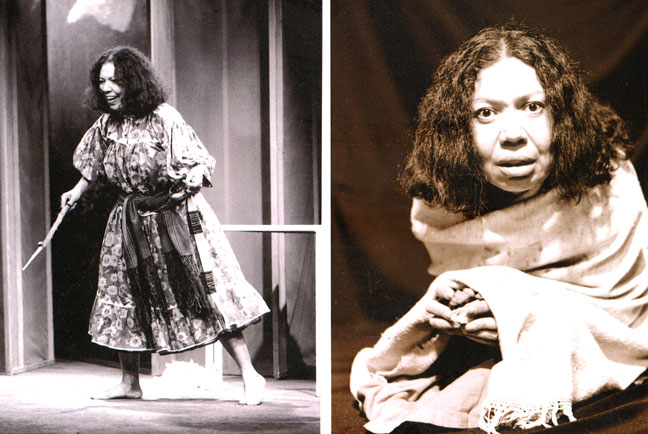A Look Back at The Road Behind Us
Over the course of three decades creating theatrical art, Borderlands has had the good fortune of collaborating with many artists, community activists and leaders who are historically tied to this unique landscape. Come with us and take a look back at the roads we have traversed.
Together, we will continue to forge a new path through this troubled tierra and work to construct new dialogue to reflect the diverse voices of this region.
An Unofficial History
By Barclay Goldsmith
The Landscape
“What country, friends, is this?” Viola, “A Tempest”
“Caminante, no hay camino, se hace camino al andar,”
-Juan Serrat, songwriter
Both of these quotations express intelligence, awe and foreboding. They are good quotes to begin our history. I am a newcomer to this land on the U.S./Mexico Border, having lived here only about 65 years. Many who live here have family that were, at one time, strangers to this land as well: Spaniards, Mexicans, Anglos, and many others. We all trespassed then, and by moving here today, continue to trespass on land settled by people thousands of years before us. This is a land settled through “cycles of conquest” says the late Tucson anthropologist Edward Spicer. The land may be partially settled now, but seeking a rightful place in the sun here has always been contested. As artists we love the physical landscape, but some of us are compelled to witness the scars on the social landscape as well. Borderlands, throughout its history, has had the good fortune of collaborating with artists, community activists and board members who are historically tied to this unique land. Together we are forging a new path through this troubled landscape as we build a theater that reflects the diverse voices of this region.
Those Before Us: Rebellion and Reshaping the Landscape
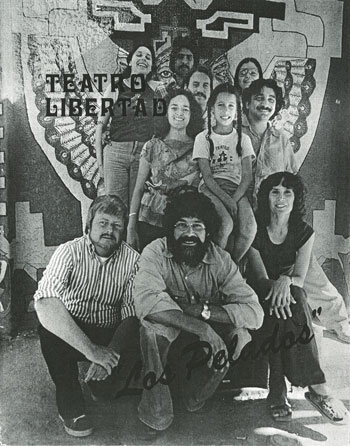
Borderlands Theater has also benefited from the legacy of the artists/activists who performed with an earlier theater, Teatro Libertad, a collective and outgrowth of the early Chicano civil rights movement. Some of us were founding members and others traveled with us in trucks and old cars and “helped with the baggage.” Libertad was formed in the early 1970s, and provided a pathway for the formation of Borderlands, creating short actos, (and at times full-length plays) in support of many community social issues: Striking city garbage workers, the famous Morenci miners’ strike, walk outs at Tucson High School, among others. Theaters are built upon the knowledge of other practitioners. Libertad was a rebellion in aesthetics, in politics and in language.
This early teatro, made up of unpaid artist/activists, also toured the state in support of many community organizations, performed at TENAZ theater festivals in California (TENAZ – El Teatro Nacional de Aztlan, a national coalition of teatros), and was even invited to Mexico on several occasions. We owed our aesthetics and play development process to actors from Luis Valdez’s Teatro Campesino and the late Sandra Archer of the San Francisco Mime Troup. They showed us how to research the issues in our communities, and create collective work. We owe thanks also to the early academics and social historians who gave us much needed encouragement: Jorge Huerta, Tomas Ybarra Frausto, and the late Mexican playwright, Emilio Carbaillido. Sylviana Wood, a longtime member of Libertad, who penned much of the dialogue behind the scenes, emerged as a locally well-known playwright by the mid -80s
Our aesthetics were rasquache: A celebration of showcasing on stage what you have when you don’t have much: For example, using garbage cans in all kinds of uses, as in Los Pelados, a play about striking garbage workers. Rasquache aesthetic does not arise because theaters have no money for props, but is rather a shock of recognition for the obvious. That being said, our budget was small, we never charged and our working-class audiences were huge. We used a heady brew of English/Spanish and sometimes Yaqui in a mixture that was truly Tucson. We drew the wrath of many Mexicanos who revered the more formal Spanish. The crazy mixture of language had a sense of bravura and rebellion that is rightfully expressed today with new urban poetry. In those days the Arizona Commission on the Arts were reluctant to fund us because “we did not give Hispanic culture dignity.” We traveled the state, performing in church basements, union halls and parks. This was a period of getting to know the physical and social landscape of the state and Southwest. We brought theater to communities and groups that had not experienced much theater before and worked in support of many local community organizations. We thought by supporting organizations such as the Mine Mill and Smelter workers strike and the flooded out farm workers in Phoenix through the United Farm Workers that we were re-shaping the social map of Arizona. Did we? We ask ourselves this.
Who Are We Really?
Borderlands’ was formed as an official non-profit in 1986 during a transition time in this country as we witnessed the collective/political energy of many teatros waning. Borderlands’ mission from the start was to present the diverse voices of the U.S./Mexico Border region. At the same time there was a blossoming of Hispanic/Latino/Chicano playwrights, nationally, whose names have now become front and center on playbills and posters, if not yet totally in the national landscape. Seduced with the idea of performing in spaces with air conditioning, functioning dressing rooms and comforts of more traditional theater for more traditional audiences, Borderlands looked for a home.
In 1987 we moved into the historical but small Teatro Carmen in the central part of downtown Tucson in Barrio Histórico. This, our first “home” had been a space for touring plays from Mexico at the turn of the previous century. The structure was adobe. Well, we did not have air conditioning quite yet. The plumbing was quaint and alley cats battled with actors for their place on the stage. Sometimes the evaporative coolers worked, thanks to designer Todd Poelstra who spent more time on the roof than in the theater. We contracted a roofing company to make repairs and we brought the electrical up to city codes, no small task for a limited budget without any city funding even though this building was historically important.
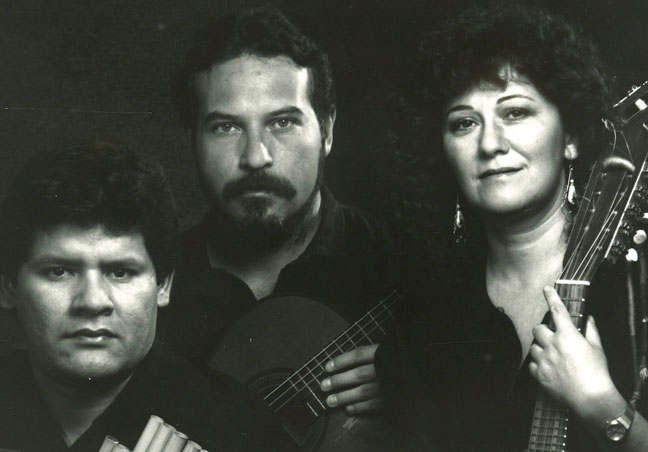
In this new space, we continued to mix new plays by new writers with homegrown collaboratively developed and produced pieces such as: Los Muertos Nunca Mueran (Scenes of the Mexican Revolution, ) and Beyond Borders (border poetry and music devised with Joan Van Dyke, Lupe Castillo, Rebeca Cartes, Barbea Williams and me with the eclectic music of Bwi Ya-Toli a group highly influenced by South American Andean/Indigenous and border sounds).
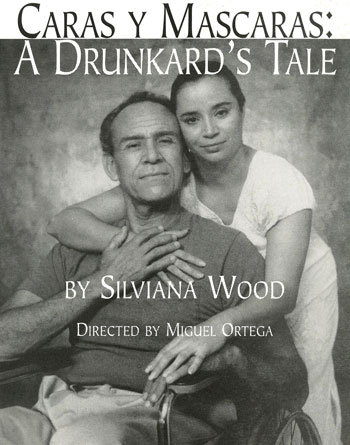
We also began to commission and or produce new plays, mostly by Arizona playwrights: Sylviana Woods, Caras y Mascaras; Elaine Romero, Walking Home, and later Barrio Hollywood; Toni-Press Coffman, Espantos in the Covered Courtyard Cantando Todavia and later, Two Days of Grace at Middleham. During this period we could never figure out if we were an ensemble-based theater or a “normal one” that was producing already written scripts. Vestiges of devised/collaboration/collectivity developed scripts were and continue to this day: When we produced the already collaboratively developed, Latins Anonymous by Diane Rodriguez, Armando Molina, and Nick Najera; Electricidad, by Luis Alfaro (which was highly developed with Tucson actors even though Alfaro ultimately shaped the piece;) Beyond Borders, developed by five writers, and eventually many actors, was a true ensemble piece.
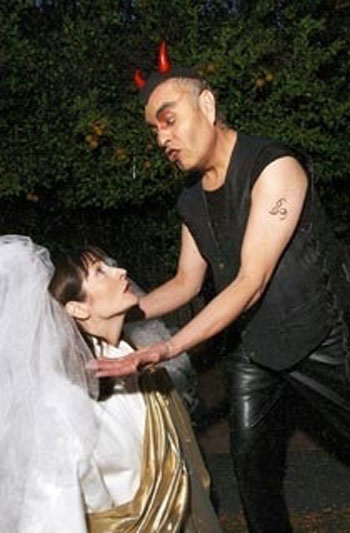
The capstone in ensemble work has been A Tucson Pastorela, a contemporary re-telling of the Shepherds trek to witness the Nativity, originally written for many years by Max Barnscomb with community input, is now a devised work and ghost written by five local authors. A Tucson Pastorela, long a tradition in more than 2,000 communities in Mexico alone, has been a mainstay since 1996, with a few of the same actors having been in it from the start. Many ideas were and have always come from the community as input shapes Lucifer’s three temptations to the shepherds as they travel. The late Albert Soto’s portrayal of Lucifer became so popular that they say he competed in attention with the “honored child in the manger.” Gertrie Lopez’s Tohono O’odham Waila music has been our musical anchor since 1998. All these plays, mostly written with elements of ensemble, community input through interviews and or devised development by a team or writers, have been some of our most popular productions. They have all had very successful runs in Tucson and Electricidad has been produced at such major companies as The Goodman Theater (Chicago) and the Mark Taper Forum (Los Angeles) and A Visitor’s Guide to Arivaca (Workshop production) has been produced at several West Coast Theaters. Were we beginning to shape the new American play landscape in small but important ways even if ultimately we did not reshape the social one, hard as we tried?
Well, looking back to about 1989, Teatro Carmen was really a bust! The ceiling collapsed one cold, rainy night when we were dark and we fled to the comfort of the new performing arts center at Pima Community College. The Anglo audiences had loved the romantic slumming of Teatro Carmen, but our Chicano/Latino audience flocked to the air-conditioned comfort of Pima College. All that remains now is the shell of the walls and roof, and a historical marker by the door, thanks to a community organization called Teatro Carmen. The space is often touted as a reminder of early Mexican “respectable culture.” To have such an important, though small building left in a state of decay is a sign of disrespect however, mirrored in the bulldozing of large downtown segments to make way for new city planning of the nearby community center.
The Playwright, Front and Center
By the 90’s, admittedly, we became less of an “activist theater”… away from union halls and picket lines to a more playwright focused theater. But, a decade later we had performed enough plays reflecting local issues that we formed the Community Partners Program. More a tradition than a formal program, partners are organizations that have a stake in a particular production and by providing before and after programming in panels, workshops etc., bring the importance of their own work to light. Especially helpful during this transitional period with interchanges of brief residencies between Eureka Theater and Borderlands, were guest artists Richard Seyd (acting coach/director) and Oskar Eustis (dramaturge/director). Both have left their own marks on the landscape. Their compelling and important work at Eureka (Emily Mann and Tony Kushner) during this time period convinced us that maybe we could have running water in dressing rooms backstage and be political at the same time. Their influence on my thinking became important and has remained with us. But depending on one’s definition of activist/artists, we were no longer in union halls, and not as often on picket lines, but there was a growing number of playwrights nationally and especially in the Southwest, whose work resonated with our mission, and who addressed the scars on the landscape.

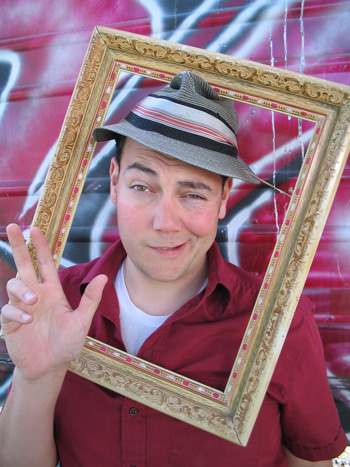
Putting us in touch with the expanding number of playwrights, another kind of landscape, was Jose Cruz Gonzales who headed the South Coast Hispanic Playwrights Program and Diane Rodriguez and Luis Alfaro of the Mark Taper Forum, which had a similar program. (These early initiatives were instrumental in the development of playwrights, though they have since been discontinued.) Gonzales and Edit Villareal were our dramaturges for four years. Toni Press Coffman, our literary manager since 2000, came on board later and we have managed to keep her in a constant state of anxiety as we have expanded, re-defined or crossed borders in our long journey together. Playwrights who we were introduced to or we already knew and whose works we later produced even up to recent times include: Josefina Lopez, Lisa Loomer, Oliver Mayer, Karen Zacharias, Milcha Sanchez Scott, Bernardo Solano, Edit Villareal, Luisa Alfaro, Endesha Ida Mae Holland, Ann Garcia Romero, Larry Kramer, Cherri Moraga, Jose Rivera and many others. We teamed up with Guillermo Reyes of Teatro Bravo in Phoenix and Andres Alcala (actor) as we developed and further work shopped, Deporting the Divas, Men on the Verge of a Hispanic Breakdown: I and II (Both plays subsequently traveled to Chicago as part of a National New Play Network Festival). It was too late in the ’90s to shock anyone with these plays but they were hugely successful, as was our U.S. premiere in Spanish of the Vagina Monologues a few years later in Tucson.
The Landscape Grows and Grows
The ’90s marked another transition as we moved into the comfortable new Center for the Performing Arts at Pima College, where some of us at Borderlands taught in the Theater Department — Chris Wilkin, soon to become associate artistic director, Poelstra and myself.
While we brought educational programs to the students in exchange for residency agreements, this period was important for the establishment of yes, a full season of plays but also the establishment of two programs that have stayed with the company since this period: The Border Playwrights Program and the U. S. /Mexico Program. The Border Playwrights Program was a formally structured program for the commissioning, and development (often with readings and workshops, leading to full productions) of new works. Calls went out nationally for new plays with a focus on the border or border as metaphor.
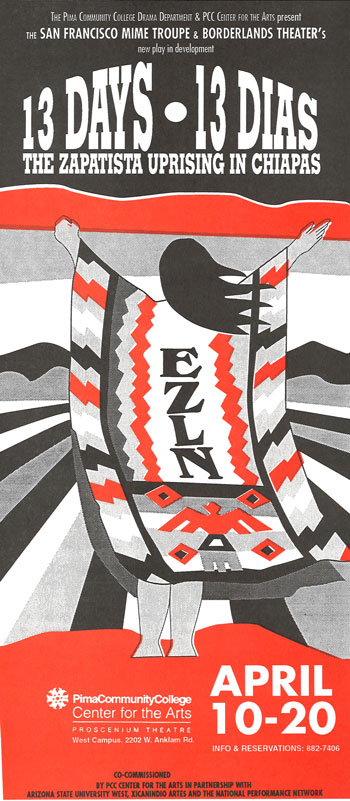
Though the national call has been discontinued, in the early years we received many new scripts for consideration and we selected three to five plays to be rehearsed and read each season. Now, we choose one playwright to commission or select one relatively new play, often a candidate for world premiere, and develop the production ( in many cases) through workshops, and often continue the process to full productions. Examples of plays we commissioned and did produce are: 13 Days: How the New Zapatistas Shook the World, a co-production with the San Francisco Mime Troup (toured nationally) with Joan Holden, lead writer and with Tucson writers, the late Daniel Nugent, Eva Tessler and Paula Loera; Electricidad by Luis Alfaro; A Visitor’s Guide to Arivaca by Evangeline Ordaz; and this year’s revival of, Arizona: No Roosters in the Desert by Kara Hartzler, based on field work by Ana Ochoa O’Leary.
In 2001 we were out on the street again. Unlike Teatro Carmen, the ceiling did not fall in but the “roof did” if you get my drift. Ha! We really do like performing at theaters across the city. We can say with confidence, “playing at a theater near you.” Fortunately the newly renovated and always supportive Zuzi’s Theater at the Historic Y, is now informally our home and we have produced the Pastorela for ten consecutive years at the Leo Rich Theater at the Tucson Convention Center, again with good backup support there as well.
The National Landscape: A Rocky Terrain
In 1999 we were invited by David Goldman to be a founding member of The National New Play Network (NNPN), a groundbreaking organization of now 27 theaters championing the development and production of new plays. One of the most significant contributions of NNPN is the “Rolling World Premiere,” which supports three consecutive premieres of the same new play within a 12-month period. Rolling World Premieres, which Borderlands has taken part in, are: Our Dad’s in Atlantis/Papa Esta en la Atlantida by Javier Malpica developed originally at the LARK Play Development Center in new York; Arizona: No Roosters in the Desert, partially developed at LARK and produced at El Circulo Teatral, Mexico City and Prop Theater, Chicago; and this year’s Agnes Under the Big Top by Aditi Brennan Kapil, (National Endowment for the Arts Distinguished New American Play Award), produce at Mixed Blood Theater, Minneapolis, Long Wharf Theater, New Haven, and Borderlands Theater.
One of the strong points of NNPN is that in the good sense of the word some of us are geo-centric to our own communities. One of the challenges has been for us to understand and guide ourselves and contemporary audiences to understand that the local or “the other” can be universal. This is a particular challenge in this country, today and especially for theaters that are focusing largely on diversity or voices still not seen on American stages. Our diversity in this country is mushrooming and theaters like Borderlands, of which there are several in NNPN, should no longer be regarded nationally as “Niche Theaters.”
We are appreciative of the collaborative support we have received nationally from many including NNPN; The LARK Play Development Center in New York for development assistance with, Barrio Hollywood by Elaine Romero and Arizona: No Roosters in the Desert and also Mixed Blood Theater in Minneapolis for collaborative support with two comedies, King of the Kosher Grocers and A True History of Coca Cola in Mexico. No Passports, of which we are a member, has been instrumental in publishing, Arizona: No Roosters in the Desert for national distribution. We also have been involved with the Kennedy Center for the Performing Arts in Washington, D.C., through the National MFA Playwrights Program, producing last season, White Tie Ball by Martin Zimmerman, following a staged reading there in 2009. I was fortunate to see many works by new playwrights when I directed a reading there in 2010.
Community Issues Front and Center
Throughout Borderlands’ history, we have always put local issues front and center. Even though we are no longer the touring theater of picket lines and union halls, we have grown increasingly focused on the troubled landscape. This continuous refocusing on the local, sometimes battles in our own meetings, producing works with other playwrights who do not address this specific region and theaters which are different from our mission. Examples of issues which we cannot ignore here have been explored in Cherri Moraga’s, Heroes and Saints’ (ground water poisoning); Julie Jensen’s, Dust Eaters (Nuclear testing on Utah Reservations); and the most critical in need of debate, understanding and advocacy, A Tucson Pastorela (faces of immigration). Almost every Pastorela has embraced this issue in one form or another and we have come to understand that the issue can be exposed from so many different lenses: “Journeys,” the Sanctuary Movement for Salvadoran refugees which started in Tucson); three plays by Guillermo Reyes exploring gays and immigration, Deporting The Divas, and Men on the Verge of a Hispanic Breakdown I and II; A Visitor’s Guide to Arivaca, by Evangeline Ordaz (Border advocacy and humanitarian aid organizations (American Theater cover story 2007); and Arizona: No Roosters in the Desert, by Kara Hartzler (Women traversing the desert as undocumented immigrants). The issues that have plagued this area of the country, “La Mesilla” as it is often called, do not go away they just become more intense and heartbreaking.
Across International Boundaries
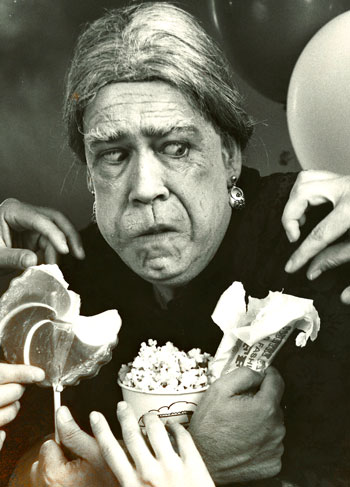
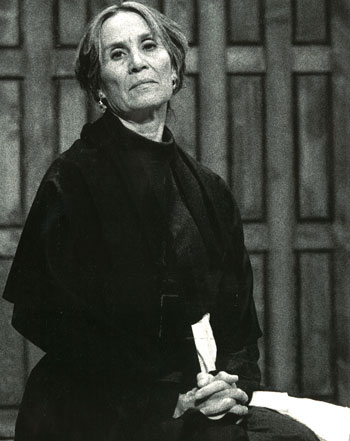
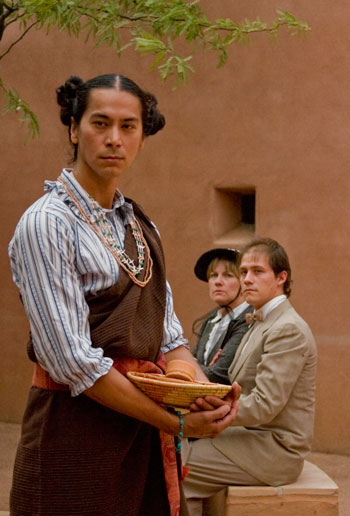
Borderlands has strayed from its border mission in terms of physical landscape, from time to time, embracing works that support The Cannon or Hispano/ Latino Culture in general. Examples are our productions in both Spanish and English of the Garcia Lorca Rural Trilogies: La Casa de Bernarda Alba/The House of Bernarda Alba, Yerma, and Bodas de Sangre/Blood Wedding, along with Fuente Ovejuna by Lope de Vega, which was invited to the Siglo de Oro Festival in Chamizal, Texas, in 1997. We also expanded our borders with plays from Mexico, Argentina and Canada and expanded our horizons in the social sphere with, Nickel and Dimed by Joan Holden and we were the first, after London and New York City, to produce Guantanamo: Honor Bound to Defend Freedom. Plays about famous writers have included works about Pablo Neruda, Burning Pacience/Paciencia Ardiente; Walt Whitman, Democracy and Jorge Luis Borges, Blind Date/Cita a Ciegas.
However, it was not until 1999 when I was offered a travel grant from Theater Communications Group TCG to visit and see theater in Mexico, where I had lived previously, that the international component of our theatre became firmly rooted with the new U.S./Mexico Program . On this travel grant I was fortunate to see Luisa Huertas in, The Woman Who Fell from the Sky/La Mujer que Cayo del Cielo by Victor Hugo Rascon Banda at a National Theater Festival in Monterey. This play tells the true story of Rita, a Tarahumara Indian of the sierras of Chihuahua who was picked off the streets of Kansas City by police and institutionalized in a mental ward for eight years because no one understood her language. We invited Luisa to perform it in Tucson, in English, Spanish and Tarahumara. Even though the characters in the play were all monolingual and no attempt was made to help the audience understand the complete text, it was one of the most well-attended plays we have ever mounted. Several things happened as a result. We became aware that we had and have not focused enough on the Indigenous peoples on our own border and we formed a fledgling support committee of mostly Indigenous residents called Stands in Circle, a program to bring Native voices and themes, especially of the border, to our stage. We were successful in kick starting some productions here under this program: Dust Eaters and She Was My Brother (World Premier) by Julie Jensen, a Utah playwright who knows her land and the people who live here well. We are still looking for an indigenous playwright who knows this, our own border, to help nurture this program.
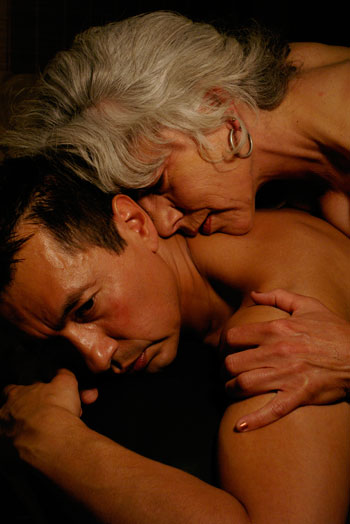
We also realized, kind of late, that our natural landscape, physical and social, is also in Mexico. How can you have Borderlands in your name and not reflect both sides of the border? That our landscape should include Mexico is a no brainer since before the Gadsden Purchase this was part of Mexico (after Spain of course and on and on backwards). I was invited to direct a remounting of La Mujer Que Cayo… by the playwright and Huertas, in Mexico City in 2003. The production then traveled to the UNESCO International Theater Festival in Tampico two years later and then embarked on a South American tour to Chile, Argentina, Uruguay and Brazil. I directed Mexican actor Victor Carpinteiro in the Mexican production and Carpinteiro became a TCG International Visiting Artist for a residency in Tucson in 2005-06. While here, he appeared in Deseo, by Rason Banda (translatd and directed by Eva Tessler, Bordelands Associate Artistic Director), following a successful run in Mexico City. And I was invited back to Mexico to remount, Blind Date/Cita a Ciegas by Mario Diament. Victor Carpinteiro and Alberto Estrella are directors of El Circulo Teatral in Mexico City, a theater with much the same mission as Borderlands. Most recently we co-produced a Rolling World Premier of, Arizona: No Roosters in the Desert (Borderlands, El Circulo, and Prop Theater in Chicago). Luisa Huertas, who founded El Centro de Estudio y Uso de La Voz (CEUVOZ), has played an important role in training actors and singers throughout the country and I have had the good fortune to continue collaborating with her at the National CEUVOZ symposiums in Mexico City each summer.
